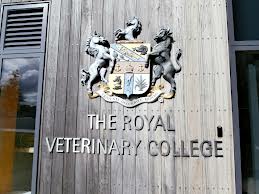William Sewell (1781–1853)
August 09, 2013
William
Sewell (1781–1853)
‘… was the second principal of the  London
Veterinary College, succeeding William
Coleman who died in
1839…’
London
Veterinary College, succeeding William
Coleman who died in
1839…’
William Sewell was the uncle by marriage of James John Garth Wilkinson and a patient of Paul Francois Curie:
On 2nd November 1894, James John Garth Wilkinson, wrote to William Boericke from 4 Finchley Road: ‘… *Mr dear Dr. Boericke, … . It may interest you to know that I am the nephew by marriage of Professor William Sewell, for long the most famous Veterinarian in England, & for 50 years virtually the head of the Veterinary College. I lived with him, & attended his lectures, & the practice of the College. He was one of the finest & noblest Gentlemen I ever knew, A Quaker by Descent, connected to the Penn Family. He was Veterinary Advisor to the East India Company. He died in a good old age, attended Homeopathically by Dr. Curie _[Paul Francois Curie]* & myself… _(Swedenborg Archive K125 [2] Letter dated 2.11.1894 from James John Garth Wilkinson, to William Boericke)…’
On 29th September 1825, James John Garth Wilkinson wrote from his school to his aunt Mary Robinson (Harriet Robinson’s sister) at Seymour Place requesting some eye water ‘… as my eyes are very bad…’ and asking for some trousers and some gloves. Mary Robinson is obviously looking after the children and the family home during this horrendous time after Harriet’s death (Garth Wilkinson’s mother), though the archives (Swedenborg Archive Family Register A148a Temple Bar loose leaf Documents and Summary Enclosed English Documents from 1662 (Latin documents begin 1621)) also record the happier circumstance that she was courting a William Sewell (1780-1853), who sent Garth Wilkinson a gift of some grapes, and news that they were about to be married. On 28th November 1825, James John Wilkinson senior wrote to James John Garth Wilkinson, from 1 Pump Court to inform him that Mary Robinson and William Sewell were to be married on 29th November 1825, and how upset he will be to loose her help at home…
From http://en.wikipedia.org/wiki/William_Sewell_(physician) ‘… Sewell was the son of an Essex farmer and of Quaker descent. At age 15, he was apprenticed to Coleman and remained at the college for 57 years. In 1815 and 1816, he was sent by the College governors to the European continent to visit veterinary schools.
*Upon graduation from the college at age 18, he was appointed Demonstrator (e.g., professor) in Anatomy, and in 1803, he was named Assistant Professor. He was charged with maintaining discipline at the College. His life was devoted to the study of horses. His biographers described Sewell as a reserved man, unsociable, hesitating, and unpopular with the students and the profession. However, he remained loyal to Coleman. *
*He popularized the operation of neurectomy, the surgical removal of a nerve in horses, in 1817. In 1825, he reported that glanders was an infectious disease which affected horses’ lungs and reported that the cure for glanders was copper sulfate. In 1835, he introduced the operation of periosteum to treat splints and sprain in horses. He was considered an expert in lameness in horses. In 1829, he performed the first operation for bladder stones in horses. *
Sewell gradually stopped teaching, and became the director of the London Veterinary School, its Secretary, and its Resident governor. In 1852, Sewell was elected President of the Royal College of Veterinary Surgeons. He died in June 1853 at the age of 72 and was buried at Highgate. He married late in life and left no family…’
See also http://en.wikipedia.org/wiki/Wikipedia:WikiProject_Missing_encyclopedic_articles/DNB_Epitome_51 *William Sewell *{::}(1780-1853){::}* ‘…*{::}* veterinarian; obtained diploma, 1799; assistant to Edward Coleman *{::}(?l764-1839){::}, second principal of Veterinary College, London; made supposed discovery of channel pervading the medulla spinalis 1803; rediscovered neurotomy, 1818; President of Veterinary Medical Society, 1835-6; Principal of Veterinary College, 1839; President of Royal College of Veterinary Surgeons, 1852.* Professor William Sewell was the Assistant Professor at the Royal Veterinary College in 1837. The first meeting of the Veterinary Medical Association was held in the Freemasons Tavern in Great Queen Street in 1837, with the introductory Oration, given by the President of the Veterinary__ __Medical Association Professor William Sewell, held in the Freemasons’ Hall next door*…’